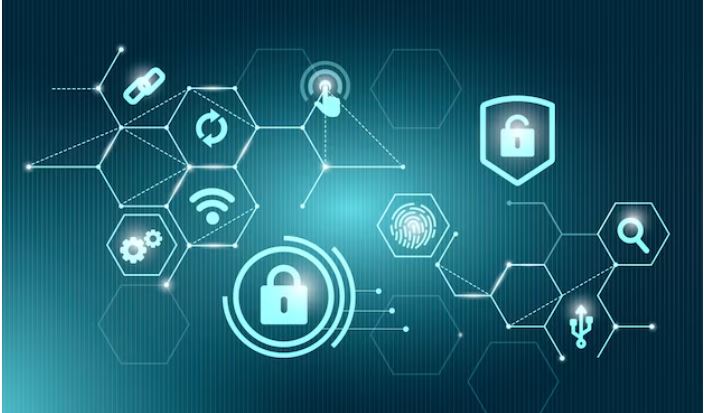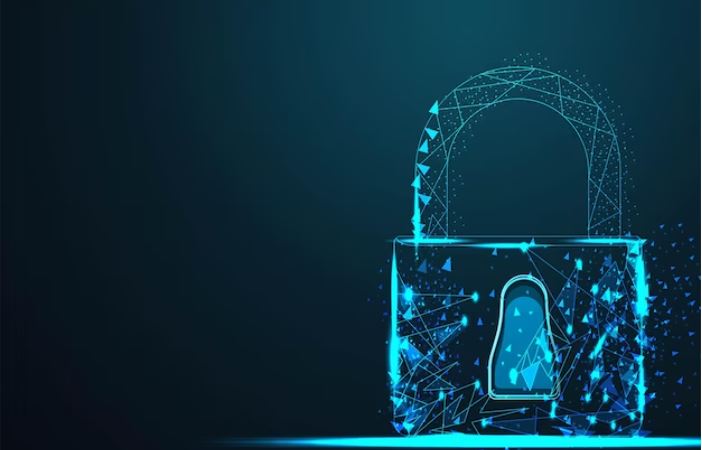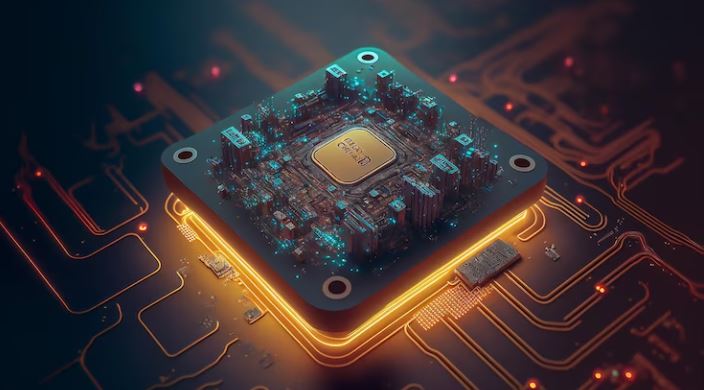The future of cybersecurity is very bright. With the growth of time and in the modern era, changes are possible, and so the world is going toward a digital era. This modern era has brought with it a new wave of threats and dangers, thus making cybersecurity essential for businesses, governments, consumers, and usually everyone. Because of the adoption of the latest mobile devices, cloud computing services, and smart phone technologies, cyber threats are increasing day by day.

At the current rate at which new cyber security solutions continue to launch and emerge in response to these risks, it is clear that there will be many new strategies for safeguarding data in the years to come with the future of it in 2030. With Cybersecurity Component Technology in Web Technology also in demand.
What is Cybersecurity and Why is it Important?
The term “cybersecurity” refers to the steps taken to prevent unwanted access to computer systems. It includes a wide range of operations, such as data storage and protection, network security systems, and network monitoring.
The main future cyber security threat is to prevent unauthorized people and other risks from accessing your data without authorization. The most frequent cybersecurity problems are malware infestations, network weaknesses, and data breaches.
107 Profitable Technology Micro Niche Ideas for the Tech
Social aspects of cybersecurity are also present. It entails developing open channels of communication among staff members and being aware of how your actions may affect others inside the organization. It is impossible to exaggerate the significance of cybersecurity.

Organizations must take precautions to safeguard their information assets from potential breaches or attacks, whether they occur virtually or physically.
What is a Cybersecurity Professional?
Anyone who can run businesses and organizations and wants to protect themselves from internet threats is considered a cyber security professional. These experts may include engineers, IT specialists, and cybersecurity specialists.
They could work for the business or for a different entity. Network administrators and IT consultants are only two positions that cybersecurity experts may hold. As consultants or independent contractors, they may also work for themselves.
One needs to be well-versed in both computer operation and the detection and mitigation of online dangers in order to be regarded as a cyber security specialist. Another requirement is the ability to employ a variety of software programs intended to prevent unauthorized access from breaking into computer systems.

Anyone who is able to assist others in safeguarding their data should become a Cybersecurity professional, and the salary of a professional in cybersecurity is around $100,000 a year.
The Future of Cybersecurity Is Quantum
A new emerging technology called quantum computing has the potential to rapidly improve cybersecurity. Compared to conventional computers, quantum computers are much faster and more effective at performing difficult tasks quickly because they make use of the special qualities of quantum mechanics.
A fantastic academic resource, Quantum cryptography and the future of cyber security, presents the most recent findings and innovations in cryptography and cyber security via quantum applications.
Advantage of Cybersecurity
The ability of quantum computers to solve complicated problems that would be difficult for a conventional computer to calculate is one of their main advantages.
Quantum computers, for instance, might be used to break extremely strong encryption schemes. Additionally, they might be utilized to circumvent sophisticated cybersecurity defenses like antivirus software.
17 Best Free YouTube Video Downloader Apps (2024)
It would make it possible for people to break into networks and steal important data. A successful cyberattack might have disastrous results, including severe economic upheaval and possibly international conflict.
The Future of Cybersecurity Cloud Platform in Cloud Computing
A new method of storing and processing data that depends on distant computers is called cloud computing. As a result, companies may offload a portion of their IT infrastructure while still providing end users with a dependable, secure platform on which to put their data.
The security measures that enterprises must implement will change as the cyber threat landscape does. And as of right now, cloud computing is among the best strategies to reduce cyber risk. This is due to the fact that it has several strong advantages:

- It primarily reduces deployment times by enabling businesses to create and release new apps without having to spend money on the infrastructure required to host them.
- Second, by eliminating the need for hardware or software maintenance, cloud computing reduces costs. It reduces operational costs and makes important resources available for additional commercial endeavors.
- Third, it makes it simple for businesses to expand their operations by adding more server power as needed.
- Fourthly, it allows them to sell services directly to clients, opening up new channels for revenue generation.
- Fifth, cloud computing enables businesses to make use of specialized knowledge from outside suppliers like data scientists and AI specialists.
- In a field that is becoming more competitive, this can help them strengthen their competitive advantage and stay abreast of developments.
The Role of Artificial Intelligence in Cybersecurity
Technology that imitates human intellect is referred to as artificial intelligence, or AI. In a wide number of industries, including finance, healthcare, and cybersecurity, AI can be utilized to automate processes. So the role of Artificial Intelligence in cybersecurity is increasing day by day in every field.
It can also be applied to enhance how we communicate with others. AI chatbots, for instance, can facilitate more effective communication while also assisting with decision-making.
Future cybersecurity and artificial intelligence are interwoven because AI will have a significant impact on cybersecurity. The number of cyber risks increases as data generation increases. As a result, humans are having a harder time keeping up.
AI might potentially inspire novel modes of thought. It is for this reason that it is so crucial to keep up with the most recent advancements in this industry. In terms of cybersecurity, it’s also critical to exercise caution.
As we previously said, dangerous individuals frequently exploit AI technologies to acquire confidential information. Therefore, it’s critical to maintain constant vigilance and make sure your system is well-protected.
The Role of Machine Learning in Cybersecurity
The role of machine learning in cybersecurity is not a new thing. However, with advancements in technology and huge new ideas to analyze, the field is making a big step into cybersecurity, and it can be used.
One area that is seeing the most interest is fraud detection, which looks for patterns that are out of the ordinary. It could be anything from unusual network activity to unauthorized users logging in from unusual locations. It can also be used in predictive analytics to predict what will happen next.

Uses Of Machine Learning in Cybersecurity
Risk evaluation and anomaly detection are two other uses. In order to identify whether a user poses a risk to the network, risk assessment examines their behavior. Anomaly detection scans the network for odd activity and marks those events for additional examination.
In order to forecast future occurrences, such as when a breach will happen or when specific actions are likely to result in an assault, machine learning can also be employed.
There are no restrictions on what these corporations may do as more use these analytics technologies. In addition to helping firms identify hazards, machine learning has the ability to help them reduce them before they have a chance to affect their operations.
Future Trends in Cybersecurity
One of the major trends in the future of cybersecurity is the extensive use of emerging technologies like artificial intelligence (AI) and machine learning (ML). AI and ML algorithms are able to solve large amounts of data and detect patterns and anomalies that may indicate a potential threat
Let us define the future of the cybersecurity industry:
In an increasingly digital world, the importance of cybersecurity cannot be overstated. As technology advances at an unprecedented pace, so do the threats that come with it. The cybersecurity industry plays a vital role in safeguarding our digital landscape.
Is Saturday A Business Day? Why or why not?
This article delves into the evolving landscape of cybersecurity and explores the trends and innovations shaping its future.
1. Cybercrime-as-a-Service (CaaS)
Cybercrime-as-a-service refers to a situation where cybercriminal services are available online for hire. Criminals can monetize their skills by offering services like breaking into computer networks or installing malware on devices. This allows them to profit without directly committing the crimes themselves.
2. Malware Automation
Malware automation means using technology to automatically analyze malicious software. This includes tasks like studying the code, examining network activity, and detecting infected devices. While this speeds up the discovery of new malware types, it can also introduce errors.
Automated tools help organizations save time and resources when investigating malware. They quickly scan many files to identify threats.
3. Polymorphic Malware
Polymorphic malware is a type of malicious software that’s hard to detect with traditional antivirus tools. It disguises itself in various file forms but spreads through email. This makes it difficult to spot, as it can seem like legitimate files.
Keeping your antivirus software updated is the best way to defend against this threat. If your system is affected, consider seeking help from IT professionals to remove it.
4. Third-party Risks
Third-party risks are threats that come from employees, partners, or vendors outside your organization. These risks encompass insider threats (like employee theft), external threats (such as cyberattacks), and compliance risks (related to data breaches and security policies).
Mistakes by third-party vendors can expose customer data, making it a concern.
107 Profitable Technology Micro Niche Ideas for the Tech
5. The Human Element
The biggest cybersecurity threat is the human factor. With technology becoming more accessible, especially to younger generations, there’s been a rise in cybercrime. People’s growing comfort with technology also makes them vulnerable to unauthorized access.
To counter this, companies should educate their employees about cyber threats and create an environment where issues can be reported safely. Awareness and a proactive approach can help maintain system security.
The Future of Cybersecurity in 2030
So, what’s coming up for the future of cybersecurity in 2030? Well, the special area of cybersecurity will keep changing as technology keeps getting better and better. This means cybersecurity will keep getting more advanced and different. Businesses need to get ready for these upcoming changes to stay successful.
- New Approaches: The situation keeps changing, and the ways we protect against cybersecurity threats need to change too. People who work in security also need to learn new things to stay updated.
- Getting More Complicated: Technology is getting more and more complicated, which makes it harder for companies to keep things safe. To succeed, companies need to look at the big picture and deal with problems in all the important parts of the business.
- Staying Ahead: The ways we protect against cyber threats today won’t work forever. Companies need to keep improving by using better tools and methods. This helps them stay ahead of their competitors.
Conclusion
In conclusion, looking ahead to the year 2030, the future of cybersecurity holds exciting yet challenging prospects. With the rapid advancement of technology, the landscape of cybersecurity will continue to evolve, bringing both new opportunities and risks.
As our digital world expands, the strategies to safeguard our information will need to adapt to emerging threats and vulnerabilities. The interconnected nature of devices and systems will demand a comprehensive and holistic approach to cybersecurity. It won’t be enough to focus solely on one aspect; instead, a unified strategy that encompasses all critical business functions will be essential.
Organizations must prioritize collaboration, knowledge sharing, and skill development among their cybersecurity professionals.
FAQ Future of Cybersecurity 2023
What can we expect from the future of cybersecurity in 2023?
In 2023, the future of cybersecurity is marked by ongoing technological advancements and evolving cyber threats. New strategies and approaches will emerge to counter these challenges.
How is technology shaping the future of cybersecurity?
Technology is playing a significant role in shaping cybersecurity. As technology advances, so do the techniques and tools that cybercriminals use. This dynamic prompts the development of more sophisticated cybersecurity measures.
What role will businesses play in cybersecurity in 2023?
Businesses will continue to be pivotal in cybersecurity. They must adapt to the changing landscape by implementing robust security measures, fostering employee awareness, and collaborating to tackle cybersecurity threats effectively.
How can individuals protect themselves in the evolving cyber landscape?
Individuals can protect themselves by practicing good cyber hygiene, using strong and unique passwords, being cautious about sharing personal information online, and staying updated about the latest cyber threats.
What challenges might organizations face in 2023 regarding cybersecurity?
Organizations may encounter challenges such as managing the growing complexity of technology, addressing emerging threats like AI-driven attacks, and ensuring compliance with evolving data protection regulations.
How will the concept of cybersecurity “moats” change in the future?
The traditional cybersecurity “moats” that protect systems will need to evolve. They will need to incorporate more adaptive and predictive strategies to defend against increasingly sophisticated cyber threats.
What skills will cybersecurity professionals need in 2023?
Cybersecurity professionals will require a diverse skill set, including expertise in artificial intelligence, data analytics, threat intelligence, and collaboration to effectively counter the evolving cyber landscape.
Is collaboration important in the future of cybersecurity?
Collaboration is essential in the future of cybersecurity. Cyber threats are not confined to individual entities, and sharing information and best practices will be crucial to staying ahead of cybercriminals.
How can organizations prepare for the future of cybersecurity?
Organizations can prepare by investing in advanced cybersecurity technologies, providing continuous training for their teams, staying informed about emerging threats, and adopting a proactive mindset.
What can we expect from the partnership between humans and AI in cybersecurity?
The partnership between humans and AI in cybersecurity will deepen. AI will assist in threat detection and analysis, while human expertise will remain crucial for contextual understanding and decision-making.







